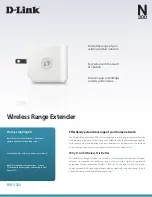
www.atlona.com | toll free:
1-877-536-3976
For International: 1-
408-962-0515
4
IR ISSUES
1. IR OUT1, 2 and 3: Place included IR cables to near your sources and connect them to the outputs of the
Extender
2. IR IN: Connect to IR Eye receiver cable (2M long) for receiving IR remote control signal.
Note: Please be very careful with plug in the blaster and receiver cables as a wrong connection will
result in cable and device burn out.
1. RJ45: Connect CAT 5/6/7 cable to next Infrared Extender Unit.
2. Power: Plug the 5VDC power supply into the unit and connect the adaptor to AC wall outlet.
Note: Only one power adapter is required, it could either be used on the Repeater or Extender Unit.
Note: IR receiver eye can take signals from up to 20 ft. away in the open distance
DC 5V
RJ 45
1
2
VERY IMPORTANT:
When connecting IR receivers and IR emitters, be very careful as if they are reversed the IR Eye will
burn-out and also may damage the IR module inside of the switch and Receiver.
When installing IR’s, the IR TX (Transmitter) is used on Sources. The eye should be placed over the
Source IR eye on most applications. If there is a signal issues e.g., device is not switching, the IR may
-
be being over flooded. Place an IR TX to the side of the IR eye at 30-degree. User can also try moving
the IR up or down from the IR senson on the source to fix the issue.
NOTE: the IR300SRS is designed to handle all IR signals up to 38KHz, which is acceptable for most
sources; however there are cases where the IR frequency of the certain source may be higher and in
this case, the IR300SRS will not work.
The IR RX (Receiver) should be placed in a visible location for the remote control view.






















